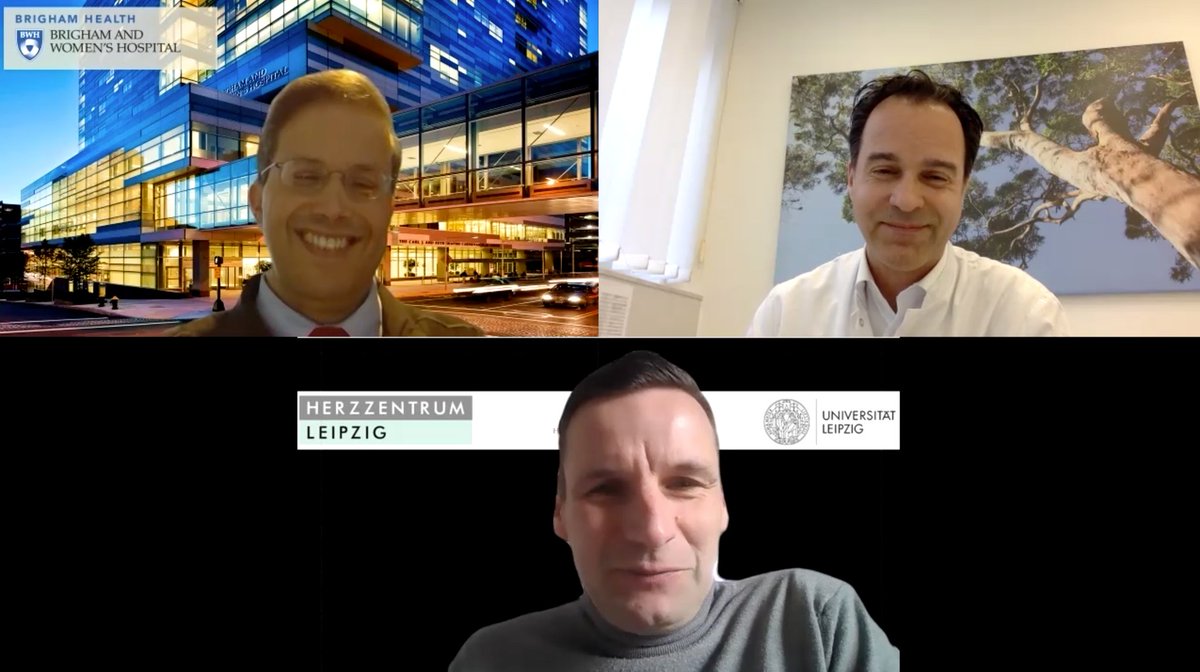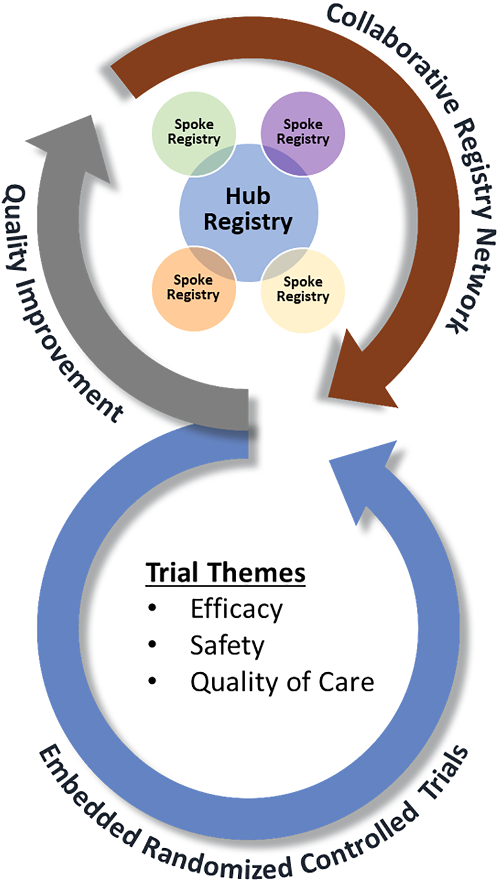
1/24
A picture is worth a thousand words. This month's #EHJCaseReports tweetorial focuses on intravascular imaging in coronary intervention.
For starters, what do you see on this #OCT image of an intracoronary honeycomb🐝?
academic.oup.com/ehjcr/article/…
Poll 👇
#cardiotwitter
A picture is worth a thousand words. This month's #EHJCaseReports tweetorial focuses on intravascular imaging in coronary intervention.
For starters, what do you see on this #OCT image of an intracoronary honeycomb🐝?
academic.oup.com/ehjcr/article/…
Poll 👇
#cardiotwitter
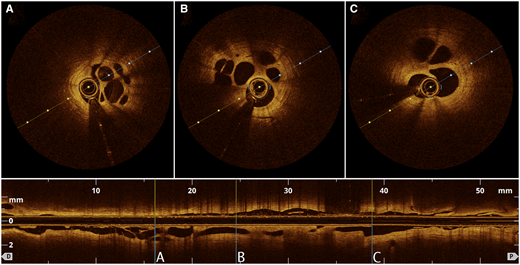
2/24
The intracoronary honeycomb on the image above is ⬇️
Find out the answer in #EHJCaseReports:
academic.oup.com/ehjcr/article/…
The intracoronary honeycomb on the image above is ⬇️
Find out the answer in #EHJCaseReports:
academic.oup.com/ehjcr/article/…
3/24
Honeycomb-like structure, a rare cause of myocardial ischaemia has multiple communicating channels divided by thin septa. Angiographically fuzzy & hazy appearance often without significant stenosis, they're best detected on high-resolution IVUS/OCT
academic.oup.com/ehjcr/article/…
Honeycomb-like structure, a rare cause of myocardial ischaemia has multiple communicating channels divided by thin septa. Angiographically fuzzy & hazy appearance often without significant stenosis, they're best detected on high-resolution IVUS/OCT
academic.oup.com/ehjcr/article/…

4/24
In this case, lotus root-like appearance on #OCT was caused by spontaneous recanalisation of occlusive thrombi, uniquely at the site of coronary spasm. Spontaneous recanalisation subsequently formed multi-channel lumens in this patient with NSTE-ACS.
academic.oup.com/ehjcr/article/…
In this case, lotus root-like appearance on #OCT was caused by spontaneous recanalisation of occlusive thrombi, uniquely at the site of coronary spasm. Spontaneous recanalisation subsequently formed multi-channel lumens in this patient with NSTE-ACS.
academic.oup.com/ehjcr/article/…

5/24
Intravascular imaging in #SCAD aids diagnosis, balloon sizing, & assessment of response to treatment. This SCAD, where #OCT showed an intramural haematoma, was impressively treated by a large cutting balloon, with resolution as seen on OCT
academic.oup.com/ehjcr/article/…

Intravascular imaging in #SCAD aids diagnosis, balloon sizing, & assessment of response to treatment. This SCAD, where #OCT showed an intramural haematoma, was impressively treated by a large cutting balloon, with resolution as seen on OCT
academic.oup.com/ehjcr/article/…


6/24
This #EAPCI expert consensus is an excellent resource. Part 1 focuses on the use of intracoronary imaging for coronary interventions in:
-Diagnostic assessment of coronary lesions
-PCI guidance & optimisation
-Identifying mechanisms of stent failure
academic.oup.com/eurheartj/arti…
This #EAPCI expert consensus is an excellent resource. Part 1 focuses on the use of intracoronary imaging for coronary interventions in:
-Diagnostic assessment of coronary lesions
-PCI guidance & optimisation
-Identifying mechanisms of stent failure
academic.oup.com/eurheartj/arti…

7/24
Intravascular imaging is invaluable in identifying mechanisms of stent failure: thrombus/stent malapposition/edge dissection.
Here are OCT images of a case of massive acute stent thrombosis, subsequently fixed with balloon dilatation
academic.oup.com/ehjcr/article/…
Intravascular imaging is invaluable in identifying mechanisms of stent failure: thrombus/stent malapposition/edge dissection.
Here are OCT images of a case of massive acute stent thrombosis, subsequently fixed with balloon dilatation
academic.oup.com/ehjcr/article/…

8/24
This type 3 Kounis Syndrome presented with very late ST & coronary evaginations, seen on #OCT
Follow-up intracoronary imaging may be important to confirm potential coronary evaginations in such cases, especially in sirolimus eluting stents
doi.org/10.1093/ehjcr/…
This type 3 Kounis Syndrome presented with very late ST & coronary evaginations, seen on #OCT
Follow-up intracoronary imaging may be important to confirm potential coronary evaginations in such cases, especially in sirolimus eluting stents
doi.org/10.1093/ehjcr/…
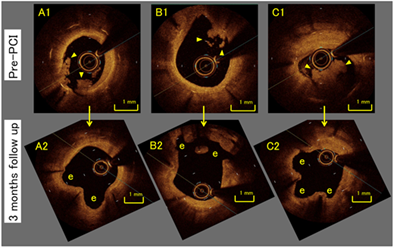
9/24
Very late BMS stent thrombosis:#OCT showed high-intensity area protruding inward stent, attenuated, w relatively signal-poor region,possibly indicating mixed thrombus.
On #IVUS, an echolucent structure inside the stent was seen, consistent w thrombus
doi.org/10.1093/ehjcr/…
Very late BMS stent thrombosis:#OCT showed high-intensity area protruding inward stent, attenuated, w relatively signal-poor region,possibly indicating mixed thrombus.
On #IVUS, an echolucent structure inside the stent was seen, consistent w thrombus
doi.org/10.1093/ehjcr/…

10/24
Troubleshooting w #IVUS: In severe strut malapposition due to partial crush after post-dilatation, IVUS probe placed in ‘live view’ between vessel wall & crushed stent, visualised initial section of crushed struts, enabling wiring of stent true lumen
academic.oup.com/ehjcr/article/…
Troubleshooting w #IVUS: In severe strut malapposition due to partial crush after post-dilatation, IVUS probe placed in ‘live view’ between vessel wall & crushed stent, visualised initial section of crushed struts, enabling wiring of stent true lumen
academic.oup.com/ehjcr/article/…

11/24
Given differences in resolution, tissue characterisation & need for contrast, IVUS & OCT have pros & cons
-#IVUS:preferred in CTO,ostial LM&CKD
-#OCT:better at detecting thrombus,culprit plaque in ACS; residual edge dissection, incorrect wire positions & stent malapposition
Given differences in resolution, tissue characterisation & need for contrast, IVUS & OCT have pros & cons
-#IVUS:preferred in CTO,ostial LM&CKD
-#OCT:better at detecting thrombus,culprit plaque in ACS; residual edge dissection, incorrect wire positions & stent malapposition

12/24
#IVUS is an invaluable tool in #zerocontrast PCI. In this case of contrast allergy, #IVUS w ChromaFlo mode was used in PCI to CTO LAD. IVUS helped identify the entry point of proximal cap, lesion assessment pre- stenting & optimisation post-stenting doi.org/10.1093/ehjcr/…

#IVUS is an invaluable tool in #zerocontrast PCI. In this case of contrast allergy, #IVUS w ChromaFlo mode was used in PCI to CTO LAD. IVUS helped identify the entry point of proximal cap, lesion assessment pre- stenting & optimisation post-stenting doi.org/10.1093/ehjcr/…


13/24
In this case report of gadolinium-based contrast use, @AnkurGuptaMD et al. performed successful two-staged CTO PCI to both LAD & LCx with #IVUS guidance in a patient with severe anaphylaxis to iodinated contrast
academic.oup.com/ehjcr/article/…
In this case report of gadolinium-based contrast use, @AnkurGuptaMD et al. performed successful two-staged CTO PCI to both LAD & LCx with #IVUS guidance in a patient with severe anaphylaxis to iodinated contrast
academic.oup.com/ehjcr/article/…

14/24
In this case, #OCT was crucial in guiding the percutaneous Rx of a giant true saccular coronary aneurysm in proximal LAD, which was treated with a polytetrafluoroethylene covered stent
academic.oup.com/ehjcr/article/…
In this case, #OCT was crucial in guiding the percutaneous Rx of a giant true saccular coronary aneurysm in proximal LAD, which was treated with a polytetrafluoroethylene covered stent
academic.oup.com/ehjcr/article/…

15/24
Intravascular imaging is a crucial part of every calcified vessel Rx algorithm, as it dictates lesion modification strategy. See this #IVUS image w calcium fractures created by intravascular lithotripsy treatment in a heavily calcified vessel
doi.org/10.1093/ehjcr/…
#IVL
Intravascular imaging is a crucial part of every calcified vessel Rx algorithm, as it dictates lesion modification strategy. See this #IVUS image w calcium fractures created by intravascular lithotripsy treatment in a heavily calcified vessel
doi.org/10.1093/ehjcr/…
#IVL

16/24
Intravascular imaging helps clarify diagnostic/ angiographic uncertainty in the setting of ACS.
IVUS/OCT can delineate luminal discontinuity/plaque disruption & thrombus.
OCT is capable of distinguishing red and white thrombus as well
academic.oup.com/eurheartj/arti…
Intravascular imaging helps clarify diagnostic/ angiographic uncertainty in the setting of ACS.
IVUS/OCT can delineate luminal discontinuity/plaque disruption & thrombus.
OCT is capable of distinguishing red and white thrombus as well
academic.oup.com/eurheartj/arti…
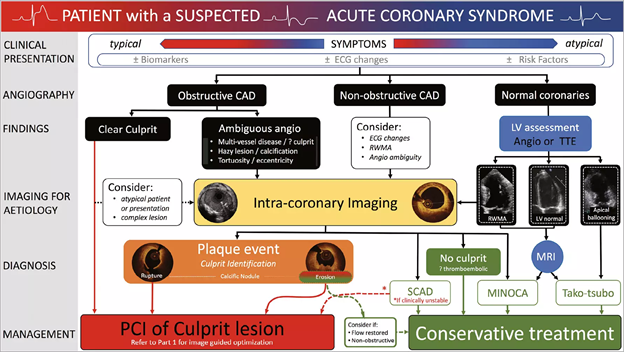
17/24
In this 68 yo STEMI pt w thrombus in distal left main bifurcation extending to ostial LCx & LAD, excimer laser coronary angioplasty ELCA was used to ⬇️ intracoronary thrombus with OCT guidance. Check out the impressive pre & post- ELCA #OCT images
doi.org/10.1093/ehjcr/…

In this 68 yo STEMI pt w thrombus in distal left main bifurcation extending to ostial LCx & LAD, excimer laser coronary angioplasty ELCA was used to ⬇️ intracoronary thrombus with OCT guidance. Check out the impressive pre & post- ELCA #OCT images
doi.org/10.1093/ehjcr/…


18/24
In this ITP patient, presenting with ACS, red thrombus visualized on #OCT in the RCA, helped decision-making in terms of revascularisation. He was treated with plain old balloon angioplasty, with satisfactory outcome as seen on OCT re-analysis
academic.oup.com/ehjcr/article/…

In this ITP patient, presenting with ACS, red thrombus visualized on #OCT in the RCA, helped decision-making in terms of revascularisation. He was treated with plain old balloon angioplasty, with satisfactory outcome as seen on OCT re-analysis
academic.oup.com/ehjcr/article/…


19/24
Intravascular imaging to define plaque morphology in ACS: in this case at least two distinct plaque morphologies of OCT-defined plaque erosions were further defined by near-infrared spectroscopy (#NIRS) & coronary angioscopy
academic.oup.com/ehjcr/article/…

Intravascular imaging to define plaque morphology in ACS: in this case at least two distinct plaque morphologies of OCT-defined plaque erosions were further defined by near-infrared spectroscopy (#NIRS) & coronary angioscopy
academic.oup.com/ehjcr/article/…


20/24
Is the presence of cholesterol crystals on OCT a precursor of ACS? See the extraordinary progression of this non-obstructive lipid-rich plaque with cholesterol crystals and thick fibrous cap, 12 months later, on #OCT
academic.oup.com/ehjcr/article/…

Is the presence of cholesterol crystals on OCT a precursor of ACS? See the extraordinary progression of this non-obstructive lipid-rich plaque with cholesterol crystals and thick fibrous cap, 12 months later, on #OCT
academic.oup.com/ehjcr/article/…

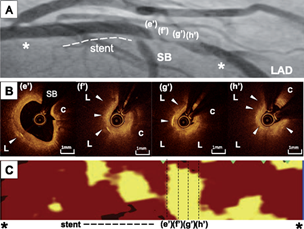
21/24
Intravascular imaging is 🔑in defining plaque morphology.
Here, the regression of vulnerable non-culprit lipid-rich plaque was observed using serial near-infrared spectroscopy–IVUS & OCT measurements after aggressive cholesterol-lowering treatment
academic.oup.com/ehjcr/article/…
Intravascular imaging is 🔑in defining plaque morphology.
Here, the regression of vulnerable non-culprit lipid-rich plaque was observed using serial near-infrared spectroscopy–IVUS & OCT measurements after aggressive cholesterol-lowering treatment
academic.oup.com/ehjcr/article/…

22/24
This two-part case series demonstrates the role of #IVUS in identifying localisation & degree of inflammation of coronary arteritis: ambiguous typical three-layer structure of arterial wall and extended low-echoic areas within adventitia
academic.oup.com/ehjcr/article/…

This two-part case series demonstrates the role of #IVUS in identifying localisation & degree of inflammation of coronary arteritis: ambiguous typical three-layer structure of arterial wall and extended low-echoic areas within adventitia
academic.oup.com/ehjcr/article/…


23/24
Want to know more? Part 2 of the #EAPCI consensus document deals w the use of intravascular imaging in acute coronary syndromes, ambiguous coronary angiography findings, and guiding interventional decision-making
academic.oup.com/eurheartj/arti…
@twj1974 @VijayKunadian @DFCapodanno
Want to know more? Part 2 of the #EAPCI consensus document deals w the use of intravascular imaging in acute coronary syndromes, ambiguous coronary angiography findings, and guiding interventional decision-making
academic.oup.com/eurheartj/arti…
@twj1974 @VijayKunadian @DFCapodanno
24/24
We hope you enjoyed these fascinating images from a wide range of #EHJCaseReports. Remember to #ImageFirst!
Thank you to our fabulous Twitter Editors: @aayshacader @FarhanaAra @DrPRao @TJ_Yeo @ANazmiCalik 👏
What would you like us to cover next?
#cardiotwitter #ESCYoung
We hope you enjoyed these fascinating images from a wide range of #EHJCaseReports. Remember to #ImageFirst!
Thank you to our fabulous Twitter Editors: @aayshacader @FarhanaAra @DrPRao @TJ_Yeo @ANazmiCalik 👏
What would you like us to cover next?
#cardiotwitter #ESCYoung
• • •
Missing some Tweet in this thread? You can try to
force a refresh



